Orchid is often exposed to parasites. In the flowering season, mites, flies, midges and mosquitoes attack the plant. But the most dangerous pest - aphids on orchids. The signs of its appearance differ significantly from the defeat of other parasites. It is difficult to cure a culture, but it is realistic if you follow some rules for caring for a damaged bush.
Content
What is dangerous
Aphids on an orchid are a parasite that gradually destroys the entire plant. The pest is especially dangerous for the Phalaenopsis cultivar - the aphid that appears on it is most likely to completely destroy the flower.
It is necessary to get rid of it because:
- It multiplies very quickly and is able to destroy the whole flower within two days, if you do not take any measures.
- Within a few hours of getting on orchids, aphids suck all vital juices out of a flower, the bush dries out.
- Getting into the vegetative system, the parasite instead of the vital juices of the plant leaves a dangerous poison that blocks the further access of nutrients from the nutrient part of the flower, so additional nutrition will not help to cope with insects and restore the bush.
- The spread of poison over the flower causes leaf stickiness. This attracts insects that can destroy the whole orchid. Mucus retains bacteria and, as a result, the culture turns black, rot, exudes an unpleasant odor.
- Even if it is possible to get rid of or, it discreetly discards the skin, from which new larvae later emerge. It is necessary to treat the plant with a special tool.
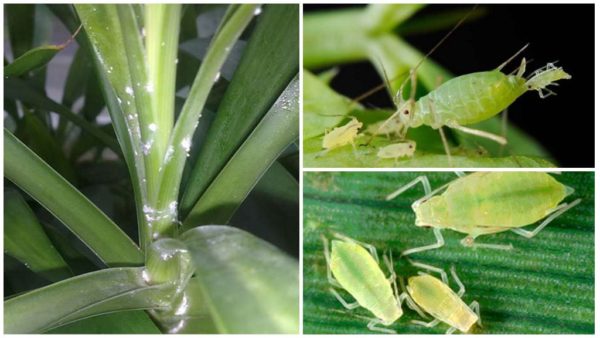
Aphids do not eat fruit, but the belief that it is harmless to them is misleading. Yes, she doesn’t eat flowers directly. Sucking water, minerals, vitamins and trace elements from the stems, it deprives the flowers of access to useful substances and buds die. Among other things, it carries harmful substances and infects the culture with viruses from other plants. Due to the substances secreted during the course of life, aphids attract insects that eat a flower.
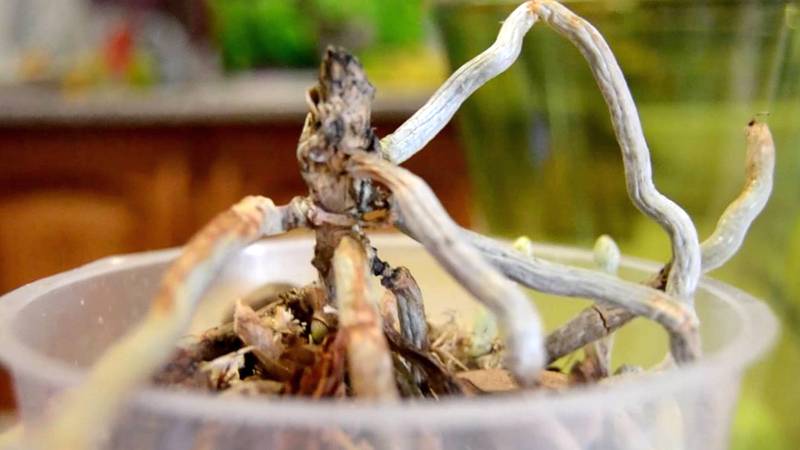 You may be interested in:
You may be interested in:Species of aphids
Aphids - an insect that forms on flowers and fruit crops, devouring a damaged plant from the ends of the roots to the ends of the buds. Before you frantically search in various sources for “aphids appeared on orchids, how to destroy”, the type of insect should be correctly determined. Different species of aphids are fought in distinctive ways. Efficiency directly depends on the chosen drug.
Kinds:
- Mealy. It affects indoor flowers, apple trees, citrus fruits, grapes. The most easily defined variety. Thanks to the snow-white or cream color, it is similar to flour. The consistency also resembles this product: if you touch it, it resembles dust and leaves a white or grayish color on your hands. This is due to the many small snow-white bristles covering the small body of the pest. In apartment or greenhouse conditions, aphids breed at an incredible speed, which is a great danger to plant life. In time, an undetected individual turns into hordes that destroy everything around.
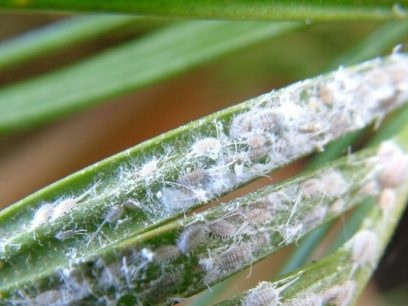
- Sheet.Formed on young shoots. When such aphid has attacked the leaves, it instantly passes to the stem, buds and root system. The distinctive color is yellow-green, which complicates the identification - it is not immediately visible on the leaves. If you do not use the remedy in time and do not process the orchid, ants will come to the aid of the aphids and eat up the remains of living leaves. Sign of leaf parasite: twisted leaves, deformed stems and quick drying, despite frequent watering.
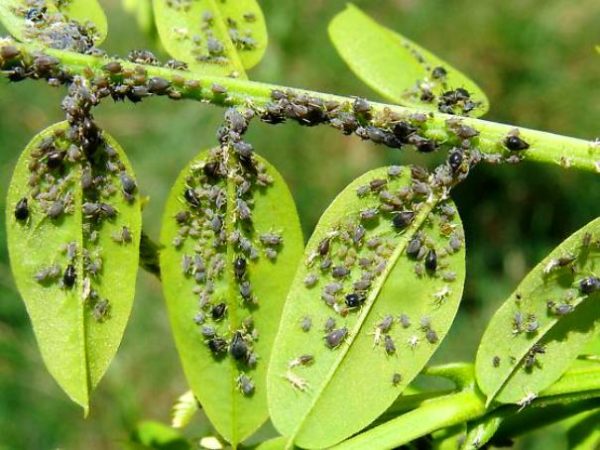
- Greenhouse. If the orchid is grown in greenhouse conditions, this does not guarantee protection against the reproduction of the parasite, but only increases the speed. It is so poisonous that it destroys even the weeds around the flower, not to mention the orchid itself. Leaves turn yellow and dry. Danger - greenhouse aphids carry bacteria and viruses that settle deep in the vegetative system of the flower.
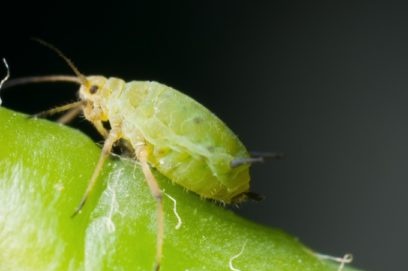
- White. It is easier to deal with the white variety at home than with any other. The difficulty lies in identification. The balls are covered with transparent wax, which hides from the eyes, so they often find aphids only when it has already destroyed half the crop. Eating nutrients in the vegetative system of the flower, causes lifelessness and lethargy.
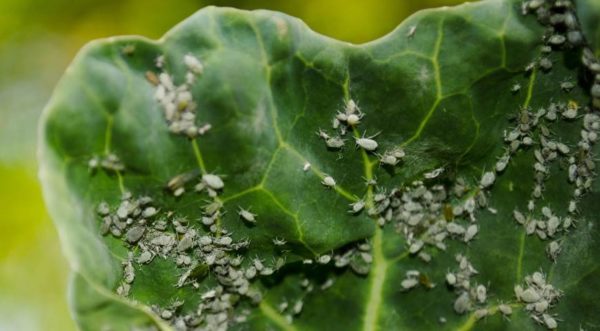
- Shield room. It got its name because of the shape of a flattened shield and rusty orange. Representatives of the species do not move at all, gradually devouring the whole plant. In the same place where the aphid lived, it dies, leaving the larvae. By strength and harm, newly formed larvae are even stronger than their ancestors.
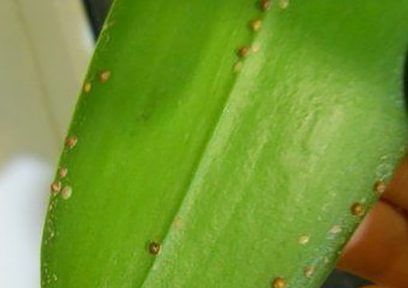
A universal drug to combat each species is the timely detection of parasites. In other cases, the struggle is individually adapted to each type.
Signs and causes of infection
To study an orchid for a sign of aphids should be on the back of the leaf:
- Small insects are the first and surest sign. They do not move, but the flowers devour at a frantic speed.
- The loss of brightness of the color of the buds. If two days ago the flower was bright purple, and today it suddenly turned white - you should check the flower for aphids.
- The tips of the leaves have dried.
- The stalk in the area near the root rots.
- Petals suddenly change shape.
Having identified one or more signs, you should immediately begin treatment.
The appearance of pests of all types is provoked by environmental conditions:
- High temperature content. Hot temperature in the street or in the house provokes the development of aphids.
- Too dry air. In the summer on the street go to the apartment in the absence of rain, the air becomes dry.
- Deficiency or excess of beneficial vitamins and minerals.
- The infection spread to the nursery, where seedlings were acquired. The flower arrived at the planting site already infected.
- Infected insects moved from the soil.
- The infection came from a neighbor's plants.
Fighting aphids involves getting rid of specific symptoms and actions aimed at the general restoration of the plant.
How to get rid of aphids on orchids
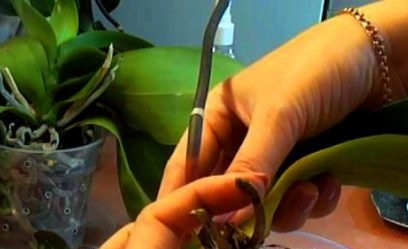
Each gardener fights aphids in his own way, but this fight always combines several methods to increase the effectiveness of the fight. Two main methods of control - mechanical purification and the use of biological products:
- Fight against aphids by mechanical removal. Getting rid of aphids mechanically is not the safest option. If you clean off the pest with your fingers, there is a chance of damage to the leaves and stem, which provokes further death of the plant. A mild way is cleansing with a jet of water. Getting on the place affected by aphids, water gently cleans it of insects, as if from dirt. The pressure should not be very strong, but at the same time, sufficient to wash off the insects. A more energy-consuming, but no less effective way is to treat each leaf with a cotton pad dipped in potassium permanganate. Potassium permanganate dries the leaves and disinfects the resulting damage.Parasites slowly die.
- Biological products. It contains poisons that are safe for humans and further crops, but fatal, for aphids and other insects that are dangerous for further crops. As part of such funds - soil fungi, when interacting with parasites, forming neurotoxins. Insects do not withstand the effects of chemicals and die on the second day. Popular and effective remedies are Fitoverm, Strela, Confidor, Entobacterin. It is important to use them carefully and wisely.
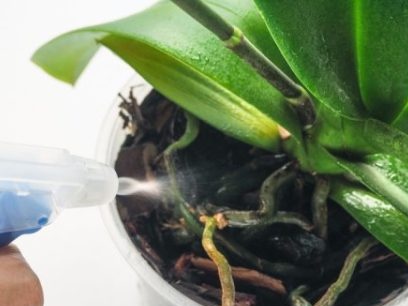
- Folk ways. Alternative methods of fighting aphids are absolutely safe for humans and other plants, because most often they do not contain any chemicals. Option one - essential oils. Dilute a few drops of peppermint oil in 300 ml of water. Place the resulting solution in a spray bottle and spray on the whole plant. Essential oils are not suitable for use in greenhouses and at high humidity, as the bush can burn from this. Another folk remedy is a decoction of citrus peels (lemon, orange, grapefruit). From the spray gun also spray several times a day.
- Chemicals. Highly concentrated substances that kill the entire system of vital activity of aphids are called insecticides. Popular Options: Bayer Garden, Spark Bio, Fufanon.
It is impossible to completely get rid of aphids, but further emergence can be prevented:
- Scald leaves with boiling water.
- Manual cleaning of emerging aphids. The main thing is to be careful and not damage the protective layer. You need to remove aphids with gloves. First of all, it is a guarantee of security.
- Around the flower garden with orchids, you can plant onions and garlic - their smell repels aphids.
- In the fall and in April-May, clean the area around the planting and treat with aphids in solutions for prevention.
 You may be interested in:
You may be interested in:The formation of aphids occurs for various reasons and it is necessary to choose methods for getting rid of it, based on the origin of aphids.

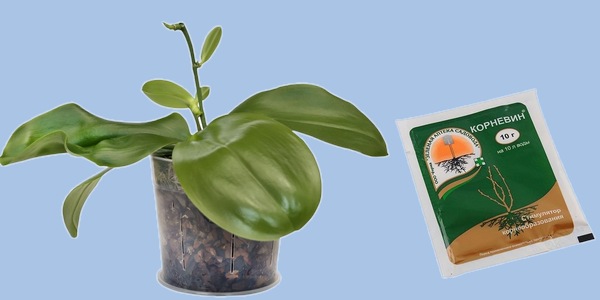
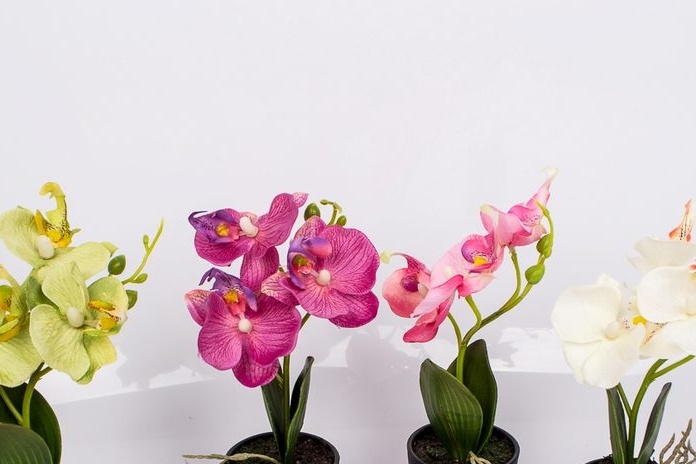
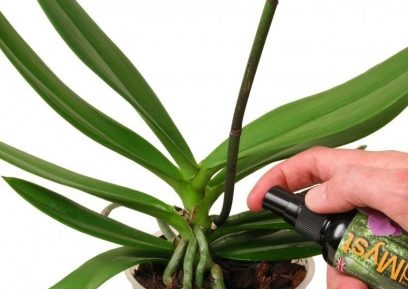
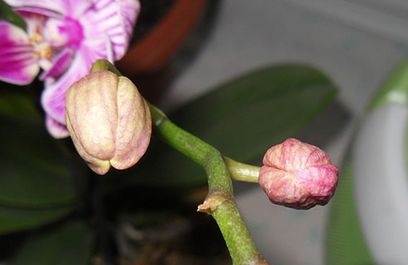 Reasons why orchids fall flowers and what to do
Reasons why orchids fall flowers and what to do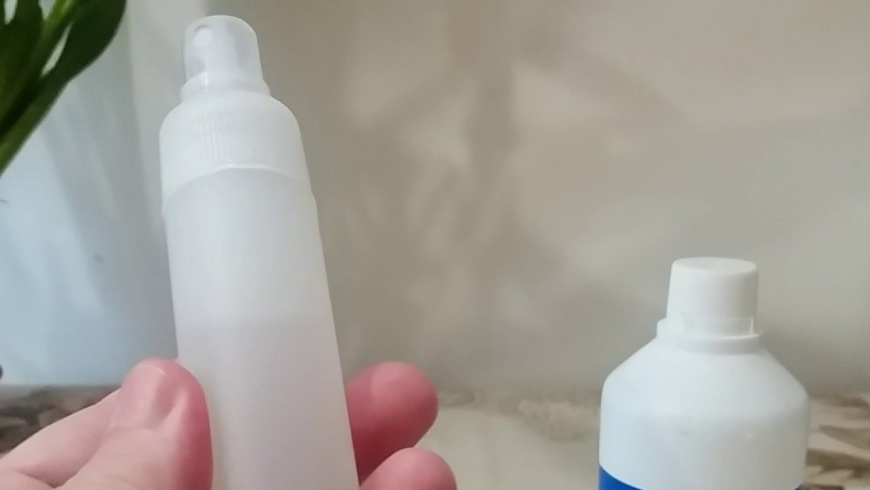 How to use hydrogen peroxide for orchids and why
How to use hydrogen peroxide for orchids and why Midges are wound up in the orchid: effective ways to get rid
Midges are wound up in the orchid: effective ways to get rid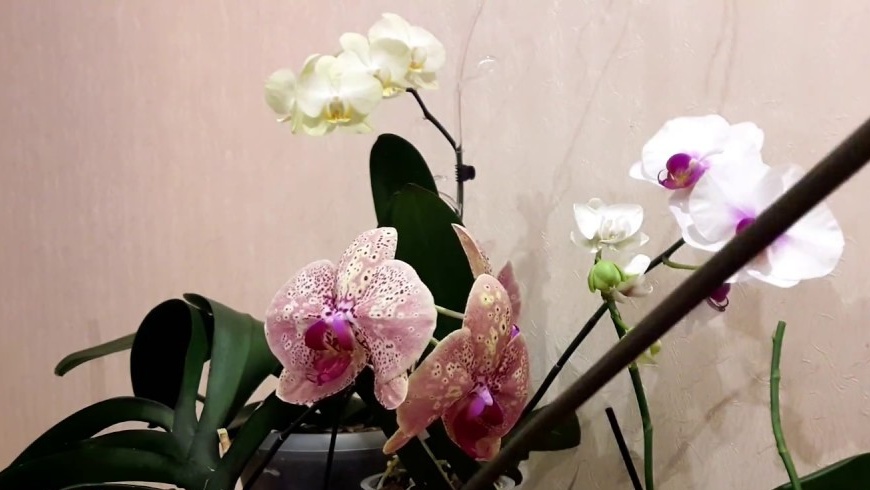 Is it possible to transplant an orchid during flowering
Is it possible to transplant an orchid during flowering